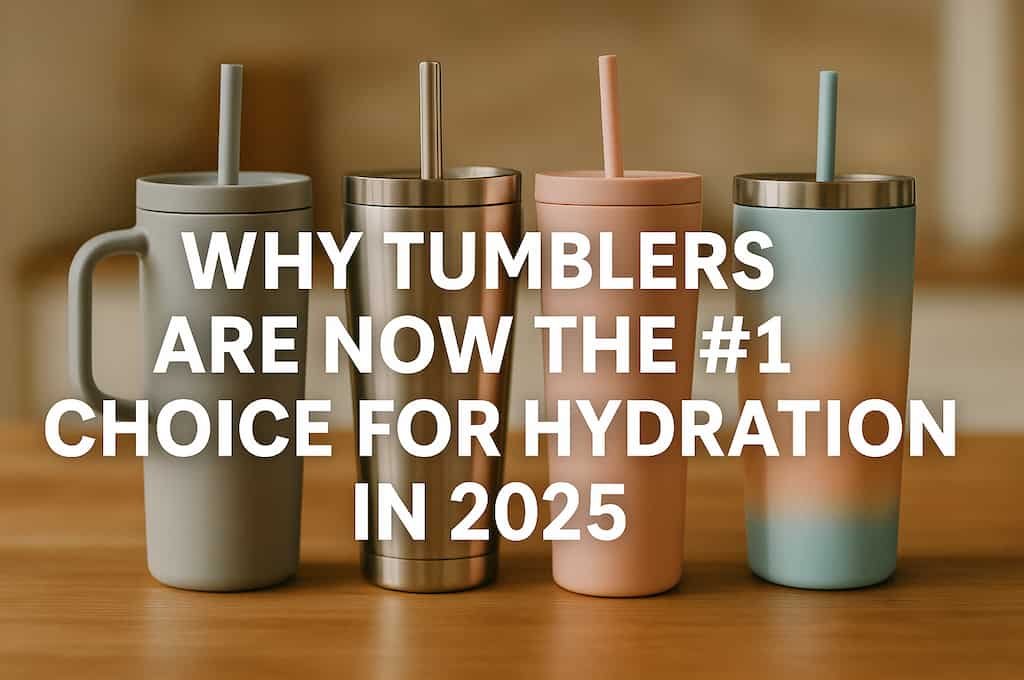
After months of field testing in real outdoor conditions like camping, fishing, and backpacking, my team and I reviewed a saturated market of water bottles to find the best ones. We tested popular brands like Hydro Flask, Yeti, and Nalgene in places like Utah’s canyon trails, facing steep climbing approaches and harsh desert climate. Our evaluation methodology focused on weight, volume, durability, and ease of use across plastic, glass, collapsible, and stainless steel materials.
Whether you need an ultra-lightweight bottle for quick hikes or one with filters for backcountry treks, our guide is built to match your hydration needs. These bottles are designed for everyday carry, with a Simple, Safe, Sustainable approach that makes every ounce on the trail matter.
Table of Contents
🏞️ Why a Good Hiking Water Bottle Matters
A quality bottle doesn’t just hold water—it enhances your outdoor experience by being:
- Lightweight 🎒
- Leak-proof 🚫💧
- Easy to drink from 🥤
- Durable and weather-resistant 🌦️
🧴 Types of Water Bottles for Hiking
🥶 Insulated Bottles
Perfect for both cold and hot climates, these bottles maintain your drink’s temperature for hours.
- Great for all-season hikers.
🧘♂️ Collapsible Bottles
Lightweight and space-saving—ideal for minimalist or ultralight backpackers.
- Folds flat when empty.
💧 Plastic Bottles
Affordable and durable, these are basic go-tos for beginner hikers.
- Usually BPA-free but may retain odors.
🛠️ Stainless Steel Bottles
Rugged and long-lasting. Often double-walled and vacuum-insulated.
- Heavier but extremely durable.
📱 Smart Water Bottles
Track your hydration levels, glow when it’s time to drink, and even sync with your fitness tracker!
- For tech-loving hikers.
🔍 Key Features to Consider
🧪 Material Safety
- BPA-Free: Avoid chemicals in plastic.
- Food-grade Steel: Corrosion-resistant and taste-neutral.
⚖️ Weight
- Lighter bottles are best for long hikes or elevation gains.
🚿 Easy Cleaning
- Wide mouths make cleaning easier (especially if adding fruit or ice).
- Dishwasher-safe options are a plus.
💦 Capacity
- Short hikes: 500ml–750ml
- Day hikes: 1L–1.5L
- Multi-day hikes: 2L+ or use a hydration bladder
🧤 Grip and Portability
- Look for ergonomic grips or built-in handles.
- Carabiner loops or straps add convenience.
🧽 Leak-Proof Design
- Twist-lock caps or one-handed flip tops help avoid spills inside your pack.
🌍 Eco-Friendly
- Reusable bottles reduce single-use plastic waste.
🏆 Top Recommended Water Bottles
1. Hydro Flask Standard Mouth
- Best for insulation and rugged use
- Link to official site
2. Nalgene Wide Mouth
- Affordable, BPA-free, ultralight plastic bottle
- Link to REI
3. Platypus SoftBottle
- Ultralight and collapsible for minimalists
- Link to MSR Gear
4. GRAYL GeoPress
- Filters water from streams and lakes—ideal for wilderness
- Link to Grayl
- Self-cleaning with UV tech—kills bacteria in minutes!
- Link to LARQ
⚖️ Pros and Cons Table
| Bottle Type | Pros | Cons |
|---|---|---|
| Insulated | Maintains temperature, durable | Heavier, more expensive |
| Collapsible | Lightweight, space-saving | Less durable |
| Plastic | Cheap, lightweight, readily available | Can retain odors, not eco-friendly |
| Stainless Steel | Strong, often insulated | Heavier, pricier |
| Smart Bottles | Tech-enabled, reminder features | Battery-dependent, costly |
⭐ Rating Table
| Bottle Name | Insulation | Portability | Ease of Use | Price | Overall Rating |
| Hydro Flask | ⭐⭐⭐⭐⭐ | ⭐⭐⭐ | ⭐⭐⭐⭐ | ⭐⭐ | ⭐⭐⭐⭐ |
| Nalgene Wide Mouth | ⭐⭐ | ⭐⭐⭐⭐ | ⭐⭐⭐⭐ | ⭐⭐⭐⭐ | ⭐⭐⭐⭐ |
| Platypus SoftBottle | ⭐ | ⭐⭐⭐⭐⭐ | ⭐⭐⭐ | ⭐⭐⭐⭐ | ⭐⭐⭐⭐ |
| GRAYL GeoPress | ⭐⭐⭐ | ⭐⭐ | ⭐⭐ | ⭐ | ⭐⭐⭐⭐ |
| LARQ PureVis | ⭐⭐⭐ | ⭐⭐⭐ | ⭐⭐⭐⭐ | ⭐ | ⭐⭐⭐⭐ |
❓ FAQs
What Type of Water Bottle Is Best for Hiking?
For long hikes, I always carry a reliable water bottle that’s lightweight, leak-proof, and has a straw for easy sips. Whether it’s plastic, stainless, or collapsible, the choice depends on features like durability, capacity, insulation, and how well it fits your gear. Built-in filters add safety for trekkers, and new biodegradable types show exciting innovation in hydration. Using hydration backpacks or bladders is also a smart transport option, especially when prepared for emergencies or aiming to reduce waste and save money.
Are Metal Water Bottles Better Than Plastic for Hiking?
When it comes to hydration on the trail, I’ve found that stainless steel water bottles are much more durable and sustainable than plastic ones. Over the years, using stainless steel has helped me reduce plastic usage while enjoying hikes without worrying about leaks or breaks. Whether at the office or deep in nature, staying hydrated is vital, and these metal bottles make a big difference. Their long life and eco-friendliness match the needs of today’s environmentally-conscious hikers, especially as we move away from single-use plastic water bottles and shift toward smarter, sustainable choices that protect both health and the planet.
What Are the Disadvantages of Metal Water Bottles?
Metal water bottles, especially stainless steel, can be heavy, bulkier, and often more expensive than plastic. They may dent, scratch, or develop a metallic taste, especially with acidic beverages, and some aren’t microwave or dishwasher safe. Poor insulation or heat conduction can make them uncomfortable to hold, and coatings may peel over time. Leaks, condensation, and limited design flexibility also affect portability, grip, and overall convenience, despite their eco-friendly appeal.
🔚 Final Thoughts & CTA
Choosing the right water bottle for hiking can make or break your outdoor adventure. From insulated giants to featherlight collapsibles, the perfect bottle depends on your hike’s length, terrain, and climate.
✅ Take Action Now:
- Review your current bottle—does it meet your hiking needs?
- Consider upgrading to one from our recommended list.
- Share this post with a hiking buddy who’s still using that old plastic bottle! 😉


